All Things Bright and Beautiful
The largest-ever citizen collection, the exhibition, which is open free to visitors until January 14, displays collections ranging from porcelains and seals to canes and clocks, from posters and magazines to badges and old films, from Buddha statues and ancient coins to fabrics and bricks.
Auspicious scissors
"Do you know that jianzhu (literally 'to cut the wick of a candle') later came to mean bosom friends chatting overnight?" asked Shen Minghua.
The 66-year-old collector of scissors is not only passionate about his extensive collection, which includes nearly 1,000 scissors, but is also keen to explain cultural stories behind the implement.
With a handful of scissors specially made to cut candle wicks in ancient times, Shen can recite a number of poems in which scissors appear; and he will also tell you stories of how scissors become an auspicious item in China to drive away evil and ghosts.
A former owner and manager of a local advertising company, Shen started collecting porcelain in the 1990s. However, a story about a pair of ancient bronze scissors that he read in the newspaper diverted his attention from priceless porcelain to the humble household tool.
"Even a billionaire can only afford a very limited number of porcelain masterpieces, but by collecting scissors, I am able to have all kinds of scissors in my collection, meaning I can study them thoroughly," said Shen, whose collection not only covers thousands of years of time, but also includes both Chinese and foreign species.
His collection gives an insight into the development of scissors over time: ancient scissors were one-piece bronze tools and cut by pressing on the back of the blades; the more advanced iron type features two blades - each with a small ring at the other end - fixed together with a screw in the middle; later on, more varied forms of scissors appear, which differ in size of rings and length of handles and blades to cater for different purposes. For instance, Shen has more than six kinds of scissors designed solely for cutting cigars.
"I still hope to find a partner to offer a permanent place for me to exhibit my collection and my studies," said Shen, whose scissors are housed in cabinets in his small one-bedroom apartment in Hongkou district.
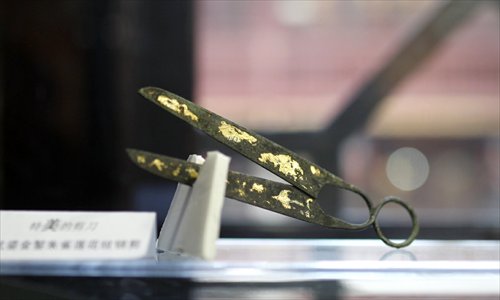
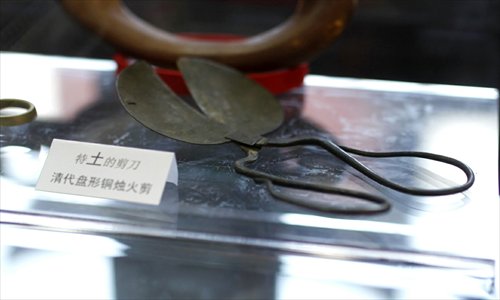
Ancient scissors collected by Shen Minghua.
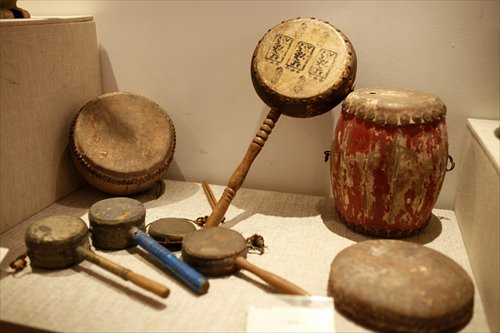
Drums collected by Quan Junmin
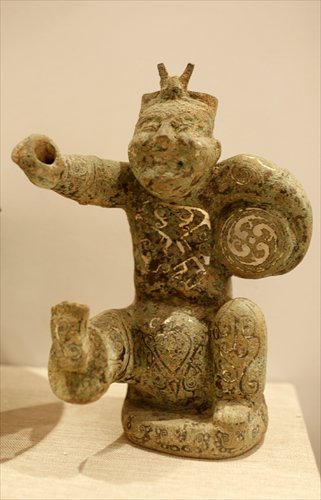
An ancient pottery figure collected by Quan Junmin Photos: Cai Xianmin/GT
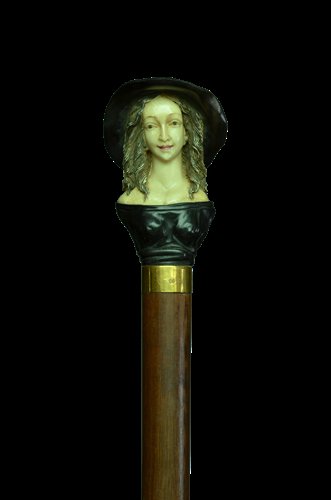
A European-style cane collected by Lu Jierui. Photo: Courtesy of the collector
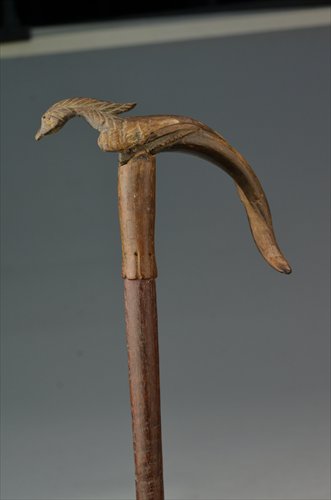
A phoenix cane collected by Lu Jierui
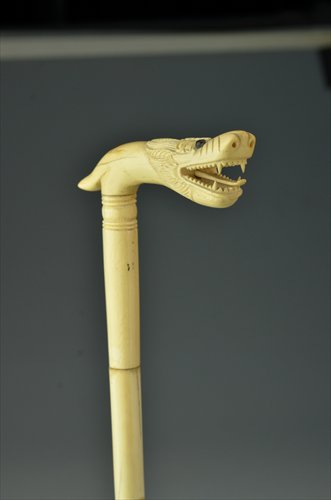
A dragon collected by Lu Jierui Photos: Courtesy of the collector
Gentleman's canes
During luxury exhibition Top Marques Shanghai 2013, Lu Jierui attracted public attention with some 200 antique canes from his personal collection.
The Shanghai-born Lu, now in his 60s, was a former lawyer and later made his fortune with his urban landscape company, whose business covered both the domestic and overseas markets. He has collected hundreds of vintage wines and is the first Chinese member of the International Society of Cane Collectors.
Over the past decade or so, Lu has been a frequent visitor of antique shops in North America, Europe and Oceania, and the international auction houses have also become a gold mine for him to enrich his collections.
The majority of his canes are foreign made, among which are a pair of dragon and phoenix canes from Malaysia featuring the auspicious animals' figures as handles, rhinoceros-horn canes, as well as a series of canes from the 19th century that have a sword or gun inside.
Lu also owns extraordinary canes with Chinese characteristics, for instance, at the exhibition visitors can see a cane with cloisonné carvings of auspicious clouds and a cane to commemorate the opening of Hong Kong as a trading port in 1841.
Lu has also opened his own cane company and works with prestigious craftsmen to make high-end canes. Lu is looking forward to the biennial forum of the International Society of Cane Collectors in 2016, which will take place in Shanghai and will give domestic collectors a chance to communicate with their international counterparts.
Beating the drums
Although 36-year-old Quan Junmin is relatively young compared to the other citizen collectors, whose ages range from 13 to 103, his unique drum collection has undoubtedly filled a gap in local private collections.
Quan owns roughly 80 drums, some of which date back to the Shang Dynasty (C.1600-1046BC). Exhibits on view at the exhibition include traditional red drums with painted auspicious cloud and qilin images, ancient pottery figures of a man playing a drum, as well as a selection of rattles from the Republican era (1912-49).
A former choreographer at a local dance company, the Shanxi-born Quan was known for his work on a number of innovative ballet shows before he was asked by a drum troupe from his hometown to help them develop.
Now Quan's Shanghai Jiangzhou Drum Company has become an influential force in both the domestic and international markets. More than 50 drummers regularly perform at local venues such as Longhua Temple and Yufo Temple for festive occasions, and last year the company held more than 600 shows in the US from April to September.
By studying the culture behind traditional Chinese drums while keeping abreast of contemporary demands, Quan created eight new series of drums for his production, including blue-and-white porcelain drums, crystal drums and even drums played in water.
"Each time I hear the powerful sound of drums, I feel more confident that it is my destiny to devote all my life to this cause," said Quan, who told the Global Times that he has spent all his money developing his drum troupe, who still live frugal lives in a village in Pudong New Area.